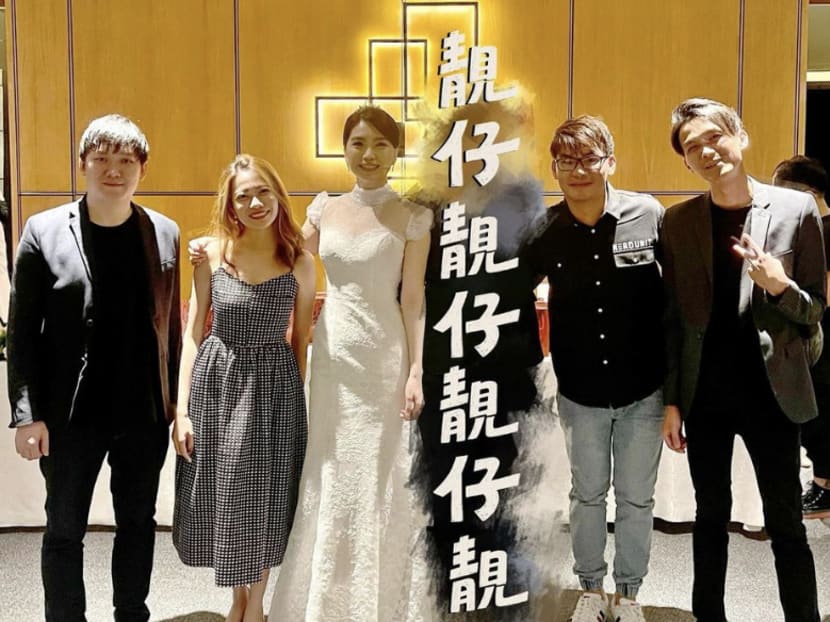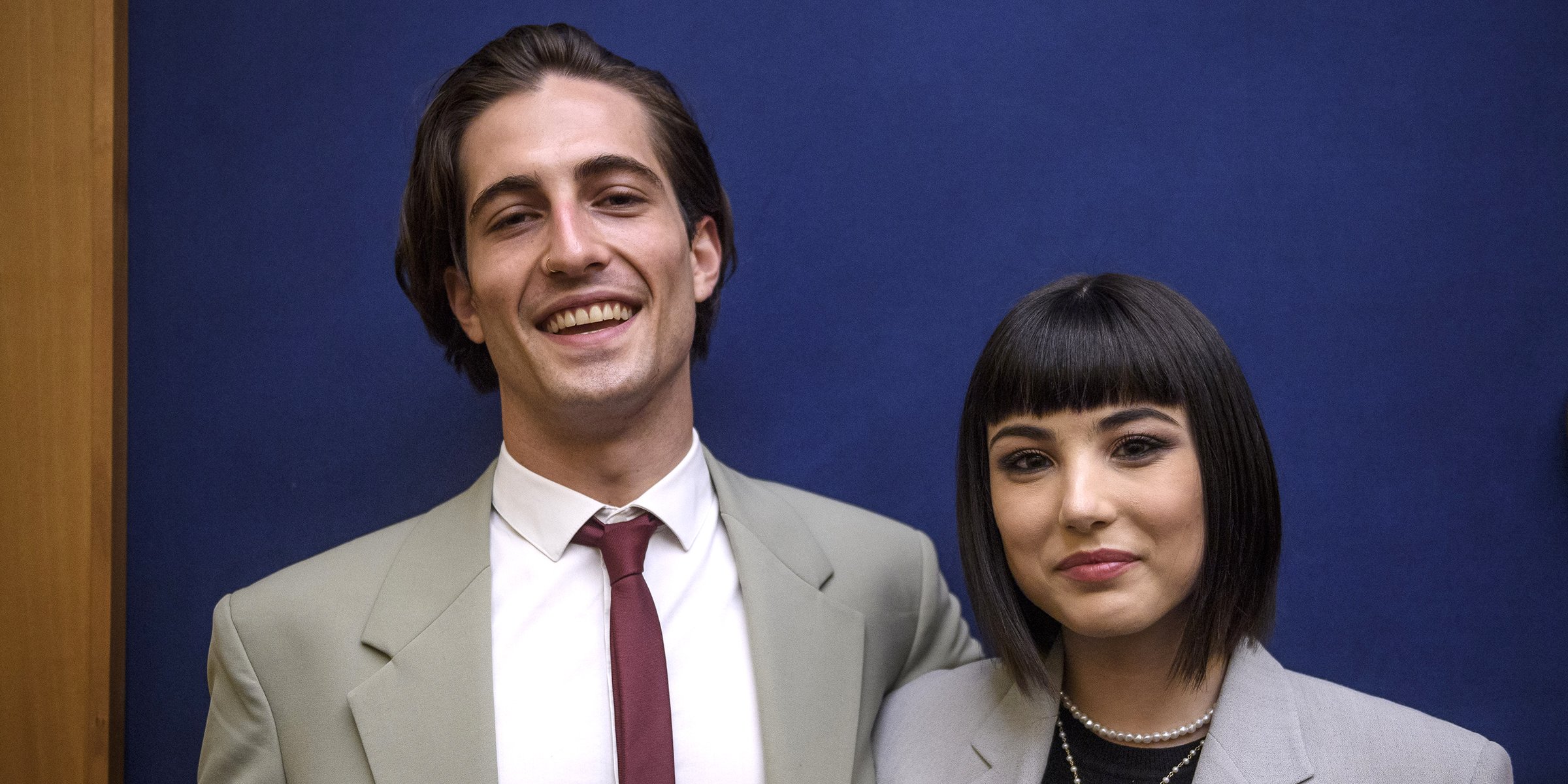Reimagining Queer Asian-American Identity: The Wedding Banquet

Table of Contents
The Performance of Identity
"The Wedding Banquet" masterfully utilizes performance and deception to represent the challenges of concealing one's true identity within a restrictive cultural context. The film's protagonist, Wai-Tung, embodies this struggle perfectly. He navigates the complexities of his Queer Asian-American identity by carefully constructing a facade of heteronormativity to appease his traditional Taiwanese parents. This performance highlights the immense pressure placed upon individuals to conform to societal expectations, particularly within the context of family honor and cultural preservation.
The "Model Minority" Myth and its Impact
The film implicitly critiques the pervasive "model minority" myth, which pressures Asian-Americans to conform to societal expectations of success and obedience. This expectation often silences authentic self-expression, leading to internal conflict and a suppression of true identity.
- The film highlights the inherent conflict between personal desires and familial obligations. Wai-Tung's fabricated relationship exemplifies this internal struggle.
- The "good Asian" stereotype, characterized by academic achievement and quiet conformity, is subtly challenged by Wai-Tung's actions and ultimately, his eventual revelation.
- Examples from the film illustrating the suppression of authentic self include Wai-Tung’s carefully curated public persona and his avoidance of open discussion about his sexuality with his parents.
Navigating Cultural Expectations and Family Dynamics
The complex dynamics between Wai-Tung, Wei-Wei, and their families form the emotional core of the film. The narrative showcases the clash between individual desires and deeply entrenched cultural expectations. The film subtly critiques traditional family structures and the immense pressure to uphold familial honor, especially concerning marriage and procreation.
- The role of arranged marriages in Asian culture is directly addressed through the central plot device of Wai-Tung's sham marriage.
- The generational gap and differing perspectives on sexuality and relationships create a compelling source of conflict throughout the film. The older generation’s limited understanding of homosexuality contrasts sharply with Wai-Tung's lived experience.
- The characters negotiate their desires with the expectations of their families through a range of strategies, from deception and avoidance to carefully calculated compromises.
Negotiating Homosexuality and Family Acceptance
"The Wedding Banquet" investigates the challenges and triumphs of coming out, particularly within a traditional Asian family structure. While the film doesn't explicitly show a "coming out" scene in the Western sense, Wai-Tung's gradual revelation of his true self to his parents and his eventual acceptance of his identity serves as a powerful narrative arc.
The Importance of Chosen Family
The film underscores the significance of chosen family networks as vital sources of support and belonging for individuals struggling with family acceptance. Chosen family acts as a crucial counterpoint to the pressures of traditional family structures.
- The relationship between Wai-Tung and Simon exemplifies the profound connection and emotional support found within chosen families. Their bond provides a crucial refuge from the familial pressures Wai-Tung faces.
- The concept of kinship beyond blood relations is central to understanding Wai-Tung’s emotional well-being and his ability to navigate his complex situation.
- Chosen families provide the emotional support often lacking in traditional family structures, creating a space for authenticity and self-acceptance.
The Limits of Assimilation and the Search for Authenticity
The film explores the pressure to assimilate into Western society and the challenges in reconciling this with maintaining cultural identity. Wai-Tung's experience highlights the limitations of assimilation as a solution to navigating the complexities of his Queer Asian-American identity.
- Wai-Tung’s strategic use of a fabricated relationship to appease his parents demonstrates his attempt to navigate the demands of both his cultural heritage and his sexuality.
- The tension between maintaining "face" (saving face, a crucial concept in many Asian cultures) and expressing one's true self forms a central conflict.
- The film's commentary on the complexities of navigating two different cultural identities resonates deeply with many individuals who identify with a similar bicultural or multicultural experience.
The Wedding Banquet as a Metaphor
The wedding itself serves as a powerful metaphor representing societal pressures, personal identity, and the performance of heteronormativity. The farcical nature of the event highlights the absurdity of expectations placed upon individuals within a specific cultural context.
The Farcical Nature of the Wedding
The comedic elements of the wedding serve as a tool for highlighting the absurdity of societal expectations and the often-comical lengths people go to in order to maintain appearances.
- Irony and satire are employed throughout the wedding scenes, subtly revealing the true nature of Wai-Tung's situation. The contrast between the elaborate wedding and the underlying deception adds a layer of dark humor.
- The contrast between the outward performance and the characters' inner realities is a key theme in the film. The audience’s knowledge creates a humorous dissonance with the parents’ blissful ignorance.
- The audience's understanding of the hidden truth contrasts sharply with the characters' parents' perception, underscoring the deceptive nature of appearances.
The Wedding as a Site of Resistance and Revelation
The wedding ultimately serves as a catalyst for self-discovery and challenging societal norms. While initially a site of performance and deception, it unexpectedly becomes the setting for Wai-Tung's gradual self-revelation.
- The gradual revelation of Wai-Tung’s true relationship with Simon represents a form of quiet rebellion against societal expectations.
- The implications of this revelation on his family dynamics are complex and nuanced, showing the potential for both conflict and eventual understanding.
- The film's optimistic and nuanced portrayal of the possibility of acceptance offers a glimmer of hope amidst the challenges faced by individuals navigating their Queer Asian-American identity.
Conclusion
"The Wedding Banquet" provides a nuanced and insightful exploration of Queer Asian-American identity, challenging stereotypes and showcasing the resilience and complexity of this often-overlooked community. Through its clever use of humor and dramatic irony, the film highlights the challenges of navigating cultural expectations, familial pressure, and the constant negotiation between performing identity and living authentically. Ultimately, the film's lasting message centers on the importance of self-acceptance and the power of chosen family in the journey towards a more inclusive understanding of Queer Asian-American identity. Continue exploring this crucial topic and reimagine the narrative of Queer Asian-American identity with further critical analysis of this compelling film and similar works.

Featured Posts
-
 Reimagining Queer Asian American Identity The Wedding Banquet
May 18, 2025
Reimagining Queer Asian American Identity The Wedding Banquet
May 18, 2025 -
 Damiano Davids Next Summer Stream It Now
May 18, 2025
Damiano Davids Next Summer Stream It Now
May 18, 2025 -
 Fifteen Years Later Amanda Bynes Announces New Entertainment Venture
May 18, 2025
Fifteen Years Later Amanda Bynes Announces New Entertainment Venture
May 18, 2025 -
 Best Online Casino Bonuses In The Us 2025 Wild Casino Bonus Codes And More
May 18, 2025
Best Online Casino Bonuses In The Us 2025 Wild Casino Bonus Codes And More
May 18, 2025 -
 Amsterdam Knife Attack Police Investigation Underway After Hotel Incident
May 18, 2025
Amsterdam Knife Attack Police Investigation Underway After Hotel Incident
May 18, 2025
